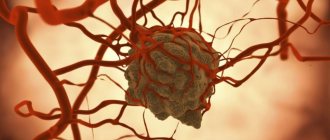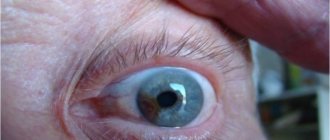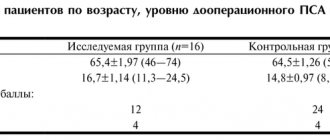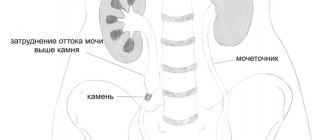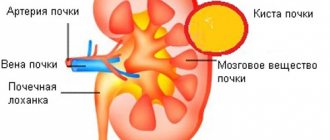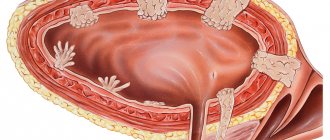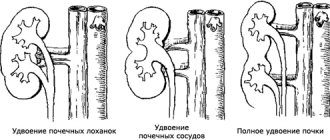We offer the best treatment option that you can find on the Internet:
- We will under no circumstances dissuade you from treatment with doctors. Decide everything for yourself.
- We will select for you those traditional medicine preparations that are suitable for your patient specifically for his diagnosis, well-being and state of the body.
- You will not make mistakes by choosing the wrong treatment. Succumbing to advertising.
- You will receive by mail exactly the drugs you need now.
- You don't have to worry about quality or fakes . We are the developers and manufacturers ourselves.
- We will advise you on how to combine our traditional medicine with official medicine.
- We will continue our treatment even if the doctors refuse
- In order not to waste your precious time , we will offer you treatment between procedures with doctors...
- We will offer you recommendations on the patient’s diet
- We will suggest you routine for the patient to ensure a healthy lifestyle.
- We will offer you videos and literature to boost morale and positive mood.
- You can consult with us, sort out a blood test ...
- Start by filling out the Patient Questionnaire .
Now read more information.
Kidney diseases and their features
There are 2 kidneys in our body. They are small - the size of a fist (120-150 grams), located in the lumbar region. The buds are similar to bean seeds. From the side of the recess, the ureter and supplying vessels are “attached” to them. The kidneys are protected by fatty tissue. There are also adrenal glands - these are glands necessary for the kidneys. Together, the adrenal glands and kidneys are contained in an elastic capsule.
One of the advantages of this paired organ is that each of the kidneys can work alone . A healthy kidney “pulls out” the entire urine production system. The other one may die, be removed, or not perform its functions fully, but the “other half,” under a favorable set of circumstances, works so well that the body often does not feel its “loneliness.”
| Rice. 1. Urinary system. |
The kidney filters the blood, eliminates excess fluid, removes waste, and at the same time urine is formed, which enters the bladder through the ureter and is then discharged out.
The kidneys remove products of nitrogen metabolism and toxins (including drugs!) from us, regulate the amount of organic and inorganic substances in the body, and participate in the metabolism of carbohydrates and proteins. The kidney is also a “partner” in the formation of biologically active substances: renin, which regulates blood pressure and the functioning of the adrenal glands; erythropoietin, which affects the rate of red blood cell formation; vitamin D, which regulates calcium metabolism in the body (it is necessary to maintain the health of our bones). The kidneys maintain the acid-base balance of the blood plasma.
A malignant kidney tumor behaves differently than tumors in other organs. It can appear at a young age and grow slowly, imperceptibly. As you know, every cancer behaves like a “guerrilla” - it harms quietly and imperceptibly. But kidney cancer is especially tricky.
In the event that one of the kidneys is affected by cancer and the tumor is discovered before the formation of metastases, then the patient’s prospects are very optimistic. The tumor will not even have time to leave the capsule. But when the tumor reaches a critical mass, the rate of its development increases markedly. Metastases form quickly. The body is exposed to an excess of toxins that the kidney removed from the patient before the illness. Exhaustion occurs and internal bleeding is possible. Due to kidney dysfunction (or one kidney !) the body is simply poisoned!
Although kidney cancer is treated with radiation, cytostatic and hormonal therapy, the disease is practically insensitive to all of these methods. But doctors don’t have any other options yet. In these cases, treatment of kidney cancer with folk remedies , namely mushrooms, comes to the rescue.
Kidney cancer treatment in numbers
Renal cell cancer occurs in 4% of all cases of cancer detected in adults. According to statistics, this disease accounts for more than 95% of all types of kidney cancer. Kidney tumors occupy a sad third place among urological oncology (after prostate and bladder cancer).
| Rice. 2. Malignant neoplasm. |
All over the world (including in Belarus), in the last decade there has been an increase in the number of detected cases of renal and hepatic cancer. In Minsk alone, between 2001 and 2007, per 100,000 residents, the number of kidney cancer patients increased from 14.6% to 20.2%.
Men suffer from kidney tumors 2 times more often than women. Moreover, both the left and right kidneys are equally susceptible to the disease. In more than 40% of cases, the tumor is detected at late stages (3rd or even 4th). And this greatly complicates the successful treatment of kidney cancer (see Masansky I.L., https://www.kvd.by).
According to statistics from St. Petersburg, tumor damage to the kidney among the male population is about 20 cases per 100,000 inhabitants, and among women - 15 per 100,000. At the same time, it is worth noting that since 1990, the number of diagnosed cases in men has increased by 70%, and for women – almost 100%.
Around the world, 91.1 thousand people die from kidney cancer every year. The most “vulnerable” age is after 40 years. In world practice, kidney cancer accounts for approximately 2% . Among other malignant tumors, kidney cancer ranks 10th .
Reasons for the development of the disease
Kidney cancer is an oncological disease in which tumor cells appear. They are very aggressive and uncontrollable. They have a fast growth rate. Typically, this type of cancer is detected in the early stages. But if you do not consult a doctor in a timely manner, the diagnosis may be made in the later stages. The reasons that provoke the occurrence of the disease are:
- Bad habits such as smoking and drinking alcoholic beverages,
- Men are more likely to suffer from kidney cancer than women.
- Excess weight. It leads to hormonal imbalance, which significantly increases the risk of disease,
- Severe forms of kidney disease,
- Genetic predisposition,
- High blood pressure.
But the above risk factors do not mean that you will definitely be exposed to this disease. Sometimes, even in its complete absence, cancer can develop.
Types of kidney cancer
Treatment for kidney cancer depends primarily on the type of tumor. Depending on the prevalence of the cancer process, there are:
- tumor within the kidney;
- cancer that has spread beyond the renal capsule;
- tumor with the formation of metastases.
| Rice. 3. Kidney tumor. |
Depending on the effect that a tumor can have on the body, it can be malignant or benign.
Benign tumors (adenoma, oncocytoma) are usually simply removed by doctors. Sometimes they don't repeat. Malignant kidney tumors (cancer) are almost uncontrollable. The most common form of kidney cancer is renal cell carcinoma (90%) and its varieties:
- clear cell carcinoma;
- papillary cell carcinoma;
- chromophobe cancer;
- collecting duct cancer.
There are also other types of kidney cancer (transitional cell carcinoma (2%), Wilms tumor, kidney sarcoma).
The sooner you detect the disease, the greater the likelihood of recovery. Especially if you turn your attention to the treatment of kidney cancer with folk remedies.
Diet
Rehabilitation after removal of a kidney tumor involves not only taking medications, as well as using traditional medicine, but you also need to adhere to the rules of a balanced diet. Since the body expends a lot of energy during the fight against pathology, a person should receive high-calorie food.
A diet for kidney cancer is a whole set of recommendations and rules that must be followed. You need to eat frequently, but the serving size should not exceed 200 g. If you do not follow this requirement, problems with the gastrointestinal tract may occur.
For kidney cancer, it is recommended to adhere to dietary table No. 7. Source: en.ppt-online.org
Food must be freshly prepared. The patient is strictly prohibited from consuming foods that have been stored for more than 12 hours. All dishes should be moderately warm. As a heat treatment, preference should be given to the oven or double boiler. As for water, the patient should drink about 3 liters of clean liquid per day.
The patient's diet should consist of fresh fruits and vegetables. If you use potatoes, it is better to boil them with the peel or bake them in the oven. Meat and fish must be dietary. It is also necessary to eat porridge; it is better to use black or grain bread.
The following products are prohibited: soy, brown algae, garlic, pomegranate, seeds and nuts, tomatoes, broccoli, eggs. As for seasonings, it is better to give preference to ginger and turmeric. Beetroot juice has good antitumor properties, so it should be on the patient’s menu.
A kidney tumor, the symptoms and treatment of which at an early stage can only be recognized by an experienced doctor, is a rather complex disease. If it is detected, it is imperative to begin therapy immediately. If you neglect your health, death will not be long in coming.
Symptoms of kidney cancer
Kidney cancer develops almost imperceptibly . However, several typical “signals” can be named, namely:
- blood in urine;
- pain in the abdomen and lower back;
- lumps in the abdominal area.
But despite the fact that these symptoms are classic, they are found in only 15% of patients.
More general signs are:
- loss of appetite;
- general weakness;
- sudden weight loss;
- anemia;
- increased body temperature;
- increased blood pressure;
- swelling of the legs;
- dilation of veins in the scrotum.
Later, cough, shortness of breath, and bone pain . This characterizes the onset of the metastasis stage and the penetration of the tumor into the lungs and bones.
Causes of kidney cancer
If you have scrolled through the pages of our website, you have probably noticed that I am especially attentive to the SOURCE of cancer.
In situations where the local doctor “does not know the etiology of the disease (origin),” curious scientists find one general pattern: PEOPLE WITH CANCER HAVE PREVIOUSLY HAD SERIOUS INFECTIOUS (VIRAL) DISEASES. This is a “multinational” conclusion, which is based on a generalization of world practice.
So, the causes of kidney (kidney) cancer .
1. Viruses and infections . Scientists have proven and practitioners have confirmed that some types of lung cancer, clear cell kidney cancer , as well as ovarian, cervical, colon and rectal cancers affect the body due to infection with the papilloma virus, genital herpes or phenotype.
Separated from each other, they are not so dangerous, although alone, after DNA transformation, they can lead to the development of oncology. But sometimes they connect, and then the situation is almost uncontrollable. The mechanism is something like this: a viral infection enters the body and affects the organ, which “defends itself” with the help of the immune system. The viral infection multiplies and goes ahead (with improper treatment), releases toxins that penetrate a previously healthy cell and change its functioning - it is the cell that degenerates into a cancerous one.
In addition, physiologists at Henry Ford Hospital in Detroit found that a significant increase in the risk of kidney cancer occurs when the hepatitis C virus enters the body.
Scientists worked on information about 67,000 patients who were observed between 1997 and 2008. 0.6% of patients who were diagnosed with hepatitis C also suffered from kidney cancer. Moreover, in the control group, whose members did not have the hepatitis C virus in their bodies, kidney cancer occurred in 0.3% of cases, that is, half as often. From this it follows that the hepatitis C virus most likely contributes to the development of kidney tumors.
That is, hepatitis C affects not only the liver ! The liver, according to scientists, suffers minimally - but the virus “belonged” to it.
According to statistics, the average age of those suffering from kidney cancer coupled with a viral infection is significantly less than that of those who had kidney cancer, but whose body was not infected with the hepatitis C virus. This information was collected by Dr. Gordon (see the journal Cancer Epidemiology, Biomarkers&Prevention").
2) High blood pressure.
| Rice. 4. X-ray of kidney cancer. |
3) The next cause of kidney cancer is treatment with kidney dialysis (removal of excess waste).
4) Smoking . The number of smokers who develop kidney cancer is twice as high as that of non-smokers.
5) Overweight . Some experts estimate that obesity increases the risk of kidney cancer in two out of ten patients.
6) Heredity associated with gene disorders (von Hippel-Lindau syndrome). People with such baggage can also develop oncology in other organs.
7) Ecology . This includes working with hydrocarbons, asbestos, nitro compounds, petroleum products, and cadmium. Working in a blast furnace shop and in steel production in general is harmful to the kidneys.
 MEDICINE , in particular, taking analgesics that contain phenacetin (kidney cells are transformed). Diuretics also “help”.
MEDICINE , in particular, taking analgesics that contain phenacetin (kidney cells are transformed). Diuretics also “help”.
9) Gender – it seems impossible to name it as a reason, but men get kidney cancer more often than women.
Diagnosis of kidney cancer
Examination methods for kidney diseases are as follows:
- Ultrasound;
- intravenous urography;
- Magnetic resonance imaging;
- CT scan;
- computed tomography or chest x-ray;
- scanning of skeletal bones to identify metastases;
- angiography;
- positron emission tomography.
The “diversity” of types and forms of kidney cancer (and most importantly, their timely detection) is explained by the development of instrumentation, which led to the early detection of the disease. Ultrasound, CT and MRI provide an accuracy of approximately 95-97%. Tumors ranging in size from 0.5 cm are detected.
The diagnosis of kidney cancer is often accidental and before symptoms appear.
To determine the possible presence of kidney cancer and its expansion, the following diagnostic methods are useful:
- Ultrasound: is a diagnostic imaging tool that is used today, in a completely non-invasive and highly accurate manner, primarily to recognize dilation of the renal cavities and/or ureters and/or to identify solid or cystic renal masses.
- TAC: uses ionizing radiation and is the most effective method for recognizing millimeter calcifications, as well as with the help of a contrast agent, extensive kidney lesions. It is also the most suitable tool for performing a biopsy for any kidney injury.
- Magnetic resonance: Non-invasively, using magnetic fields and radiofrequency waves, the technique is currently used to isolate the urinary tract and kidneys to rule out pathological dilation of the calyces and/or ureters, and to more accurately identify otherwise identified renal masses.
- PET (positron emission tomography): This is a diagnostic method that uses a radiotracer that accumulates in tumor sites characterized by high metabolism. Its use may be limited in case of kidney tumors, since part of the radiopharmaceutical is excreted through the kidneys. It is most useful for assessing renal metastasis from other malignancies.
- Biopsy: This is a minimally invasive technique for collecting a tissue sample, which in selected cases allows histological examination (under a microscope) to confirm the presence or absence of kidney carcinoma before the removal procedure. tumor, and provide important information about the histological type and biological aggression of the tumor. A kidney biopsy is not a routine test but is only performed in a few selected cases.
Stages and treatment of kidney cancer
Stage I. The tumor is located within the kidney. Neighboring organs and lymph nodes are not affected (survival rate 81%).
Stage II . The surrounding tissue or adrenal gland is affected. The tumor does not penetrate either the lymph nodes or neighboring organs (survival rate 74%).
Stage III . The tumor sizes vary. It affects the “renal” lymph nodes, as well as the vessels of the kidney and abdomen. Neighboring organs survive and the cancer does not penetrate them (survival rate 53%).
Stage IV . This includes almost any cancer that has grown into neighboring organs (spleen, intestine; the anterior abdominal wall is affected). Metastases to distant parts of the body (survival rate 8%).
| Rice. 5. Stages of kidney cancer. |
Treatment for kidney cancer in medical institutions is almost standard: surgery, radiation therapy, immunotherapy and chemotherapy. metastases when diagnosed .
| Rice. 6. Removed kidney with malignancy quality tumor. |
In official traditional medicine, during the treatment of kidney cancer, complications are possible - hair loss, noticeable susceptibility to infections, high blood pressure, mouth ulcers, diarrhea, loss of appetite, weakness, nausea or vomiting, changes in blood sugar levels, pulmonary edema, etc. .
Therefore, do not panic when diagnosed, but think carefully about how to help your body, especially after surgery? How to restore his strength? My products will significantly help you with this. Prevention of kidney cancer
If you have a predisposition to developing kidney cancer or if you want to protect yourself from this disease, you should follow a few simple rules.
- Check your body regularly for viral infections. If any are identified, be sure to undergo treatment.
- Avoid or at least minimize your alcohol consumption and the number of cigarettes you smoke.
- Be careful what you eat. Food should be healthy and environmentally friendly, as well as complete.
- Follow your doctor's orders and take prescribed medications on time.
- Try to avoid unsafe work in hazardous industries.
- Strive to minimize occupational exposure to chemical carcinogens.
- Get checked regularly. This is especially important for those who have a genetic predisposition to cancer, and for those who work in a “dirty” enterprise.
Remember about a healthy lifestyle: psychology-movement-nutrition!
